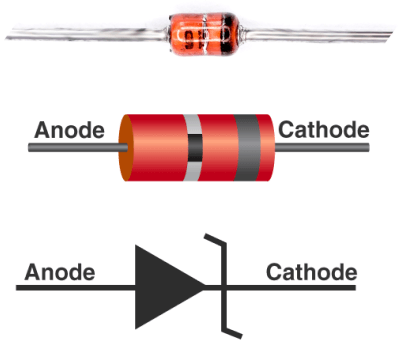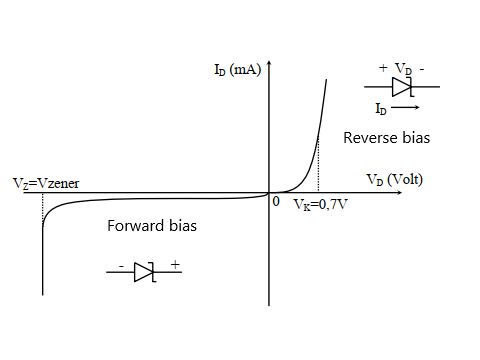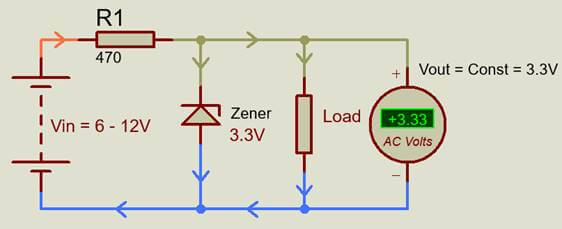What is zener diode? Characteristics, working principle, application of this type of diode.
1. What is Zener diode
Zener diode is a heavily doped semiconductor diode that is designed to operate in the reverse direction. People make it with voltages from a few Volts to several hundred Volts.

What is Zener diode
+ When the zener diode is forward biased, its characteristic is the same as that of the rectifier diode.
+ The characteristic used for this diode is when it is reverse biased. The reverse voltage across the diode is almost constant while the current flowing through it varies by a wide range.
The voltage across the Zener is independent of the current through it. So it is used to stabilize the voltage, creating the reference voltage. However, the stability of the diode is dependent on temperature and load.

V-A characteristic diode
>> Refer to video explaining about Zener
– The influence of temperature: When the temperature changes, the charge carriers produced also change:
+ With diodes with zener voltage: Vz < 5V, when the temperature increases, the zener voltage Vz decreases
+ With diodes with zener voltage: Vz > 5V, Vz will increase when the temperature increases.
+ The diode has a VZ value close to 5V, the VZ voltage hardly changes, so the temperature changes.

Zener affected by temperature
2. Zener diode Specifications
+ Zener/Breakdown Voltage (Vz) – The Zener or the reverse breakdown voltage ranges from 2.4 V to 200 V.
+ Current Iz (max) – It is the maximum current at the rated Zener Voltage (Vz – 200μA to 200 A)
+ Current Iz (min) – It is the minimum value of current required for the diode to breakdown.
+ Power Rating – It denotes the maximum power the Zener diode can dissipate. It is given by the product of the voltage of the diode and the current flowing through it.
+ Temperature Stability – Diodes around 5 V have the best stability
+ Zener Resistance (Rz) – It is the resistance to the Zener diode exhibits.
3. Ideal diode
The ideal Zener diode only conducts when the reverse bias voltage is greater than or equal to the zener voltage Vz. The voltage across the diode will not change and is equal to the voltage Vz. When the reverse bias voltage is less than the voltage Vz the diode will not conduct.

This characteristic of the diode is used in low power circuits, to generate a reference voltage.
4. Application
The Zener is used as the voltage reference. When connected in parallel with a variable voltage source so that it is reverse biased, Zener conducts when the voltage reaches the diode’s reverse breakdown voltage. From that point on, the voltage across the diode will not change so the output voltage is stable.
For example, the circuit generates a standard voltage of 3.3V using a Zener with the voltage Vz = 3.3V as shown below:

Application circuit of zener diode
When not connected to the load, assuming that Vin = 12V, the current through the diode will be:
Iz = (Vin-Vz)/R1 = (12-3.3)/470 = 18.5mA
Zeners usually have a capacity of 0.25W, so R1 is chosen to satisfy this value.
>>> See also:
What is diode – best article about diode
Working of single phase bridge rectifier (10 circuits)